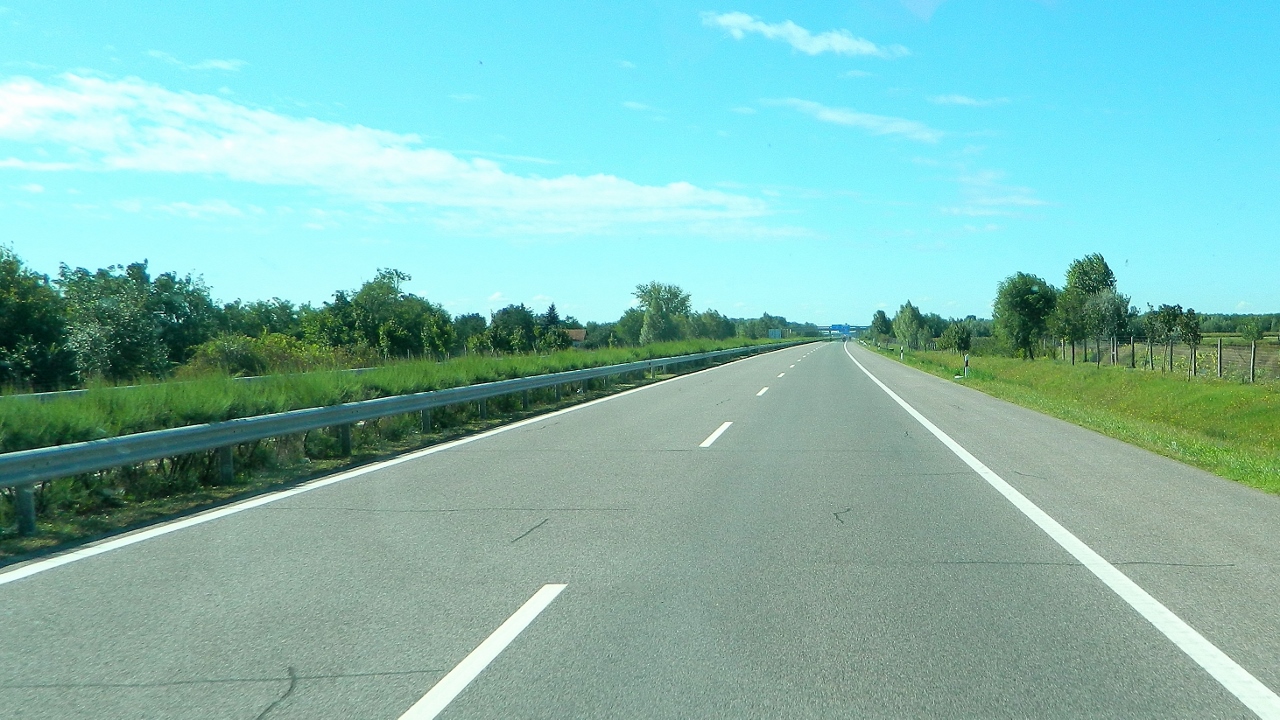Leaving Szeged the next morning we travelled south on the motorway alongside the rail track. At 10am we were the only vehicle travelling on the M5 towards Serbia and expected to see groups of travelling migrant people, making their way from the border where Hungary has installed a high wire fence.
We saw no one other than a solitary official at the now empty border camp. Passing through the ferocious-looking fence we were questioned politely in German by the Serbian border guards, and then cheerfully welcomed and waved in.

The condition of the road deteriorated almost immediately and the two-lane motorway was ridged by weather damage and patched up with lumpy tar and concrete. Thankfully, as we continued on our lonely way, Simon was able to drive Bertha across both lanes to avoid the worst of it.
‘Snopper’ our sat nav was pretty useless. We quickly discovered that her mapping was only partial and the roads she did have were detailed in the Serbian Cyrillic alphabet.
We were only travelling as far as Subotica, which was well signed (Суботица), and after a couple of wrong turns found our chosen campsite, which turned out to be parking at a restaurant, on the city’s outskirts. We were warmly welcomed in English and charged the princely sum of 600 dinar, or £3.60 for our night’s stay.
We then biked a hair-raising four miles into the centre of the city negotiating a ‘bike lane’ of potholes and tree roots and other cyclists jostling for position at fast speeds. It was a relief to arrive in the Art Nouveau centre at an enormous blue-tiled fountain and in front of a colossal red and richly decorated City Hall.
Every corner of Subotica has an architectural marvel and we wandered the streets admiring the many sculptured and florally-ornamented palaces that were created in the early 1900s for the wealthy families of industrialists and bankers. The colours were a riot of red, orange, gold, blue, lilac, white and green. The pavement cafés were full of people lounging and eating ice cream in the hot sunshine.
Subotica’s synagogue is a wonder of Serbia’s Jewish community but is sadly in need of repair. Before the Second World War it could contain 1,600 people but afterwards was only worshipped in by 40 survivors. It has been owned by the city since the 1970’s and is now closed to visitors, although opened on request, and is being slowly renovated. We admired its faded beauty and green and gold tiled-domes from outside.
After the fast bike ride back to Bertha and time to catch our breath and reflect on the day we enjoyed a traditional dinner at the restaurant. We’d been eating a largely vegetarian diet in Hungary so a ‘meat sharing plate’ of cevapi, mini burgers, chicken wings and pork chops with salad, fries and accompanying dips of tikka and ayvar was a culinary delight. So too was the cold glass of Jelen pils. Ziveli!









